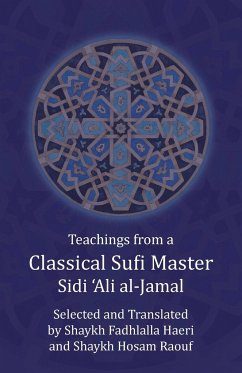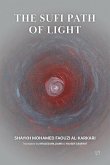"The author of this book is the great Shadhili Shaykh Sidi 'Ali al Jamal of Fez, Morocco, who died in 1194 Hijrah. The original Arabic title of the book was 'Advice to the Seeker on the Path of Asceticism' or 'Beautiful Rubies in Understanding the Meaning of Man'. My first exposure to this book came through Diwan Press, 1977 complete translation of the text by Aisha 'Abd ar-Rahman at-Tarjumana, which was produced under the direction of Shaykh Abdulqadir al-Murabit. I loved the book, benefited from it, and was inspired to read the original in Arabic. A photocopy of a handwritten version of the book later came into my possession. The original handwritten manuscript uses classical and Qur'anic Arabic and Sufi terminology with a Maghrebi vernacular. The style of the writing is free-flowing and repetitive, with long paragraphs and sentences covering several ideas in a charmingly quaint fashion. A method of exposition which was common practice with the learned men of past centuries, when books and reading were rare. This version was likely to have been handed down through several generations of the family of Ibn Ajiba (another great Moroccan Shaykh, who died in 1224 Hijrah). The manuscript was written in 1265 Hijrah in a partly colloquial Maghrebi script by the grandson of the author, with many variations in the quality of the writing, the size of the words and lengths of the sentences. A few years on having enjoyed the book in the original Arabic, I felt inspired to produce a revised version with the topics rearranged, which would be more reader-friendly. By Allah's generosity, some of my close brothers and students in Islam, especially Shaykh Hosam Raouf, encouraged me to abridge and edit the Teachings from a Classical Sufi Master and translate the book. Throughout this project, I felt the guiding light of the deceased author and his acceptance of this work. Sidi Mustafa al-Basir, a contemporary Darqawi Shaykh, (died 1427 AH/2006 CE), told me that Sidi 'Ali al-Jamal had written a few pages at a time and dropped them from the window into the courtyard of his house. It was his successor, Moulay al-Arabi al-Darqawi, who collected the pages and put them together in the form of a book. When Sidi Mustafa visited us from Morocco in December 2002, he was delighted to hear this selection from Sidi 'Ali al-Jamal's work had just been completed. He, himself, had thought of doing something similar but had never managed it. This rendering from Sidi 'Ali's work has been produced with the express purpose of serving the cause of original Islam and the Prophetic Household, from whom this Shaykh is descended. Our ultimate accountability and gratitude is to Almighty Allah and His generosity. " Shaykh Fadhlalla Haeri
Bitte wählen Sie Ihr Anliegen aus.
Rechnungen
Retourenschein anfordern
Bestellstatus
Storno








